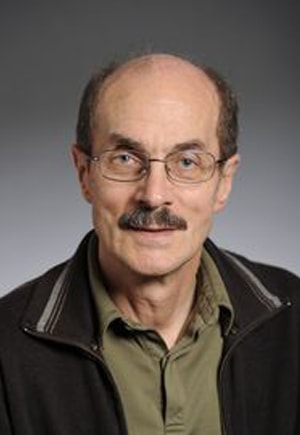Helmut Vogel
Emeritus Professor of Physics
Nuclear & Particle Physics
High Energy Physics Experiment
Wean Hall 7410

Education & Professional Experience
Ph.D.: University of Erlangen-Nürnberg (Germany) in Physics (1979)
M.S.: University of Erlangen-Nürnberg (Germany) in Physics (1975)
Professor of Physics, Carnegie Mellon University, 1992–
Associate Professor, Carnegie Mellon University, 1989-1992
Assistant Professor, Carnegie Mellon University, 1983–89
Post-doctoral Research: Max-Planck Institute (Germany), 1980-83
Post-doctoral Research: University of Erlangen-Nürnberg (Germany), 1979-80
Research Interests
My research interests are in high-energy particle physics, especially in experiments at colliding-beam accelerators. Our Carnegie Mellon University group is part of a large international collaboration that has constructed and is operating the Compact Muon Solenoid (CMS) experiment at the Large Hadron Collider (LHC). The LHC is a proton-proton colliding-beam accelerator at the European center for high-energy physics, CERN, in Geneva, Switzerland. It has reached center-of-mass collision energies of 13 TeV, the highest ever created in an accelerator.
Following the recent discovery of the long-sought-after Higgs boson by the CMS and ATLAS experiments, the main goals of CMS include precision measurements of the properties of the Higgs boson and searching for Physics Beyond the Standard Model. Such new physics might manifest itself through supersymmetry, dark-matter candidate particles, or additional quarks and leptons beyond the known three families. This latter aspect of searches is a specific focus of mine.
Selected Publications
The CMS Collaboration, Search for a standard model-like Higgs boson in the mass range between 70 and 110 GeV in the diphoton final state in proton-proton collisions at √s = 8 and 13 TeV, Phys. Lett. B 793, 320 (2019)
The ATLAS and CMS Collaborations, Combinations of single-top-quark production cross-section measurements and |fLVVtb| determinations at √s = 7 and 8 TeV with the ATLAS and CMS experiments, J. High Energ. Phys. 05, 088 (2019)
The CMS Collaboration, Measurement of exclusive ϒ photoproduction from protons in pPb collisions at √sNN = 5.02TeV, Eur. Phys. J. C 79, 277 (2019)
The CMS Collaboration, Measurement of nuclear modification factors of ϒ(1S), ϒ(2S), and ϒ(3S) mesons in PbPb collisions at √sNN = 5.02 TeV, Phys. Lett. B 790, 270 (2019)
The CMS Collaboration, Search for heavy resonances decaying into two Higgs bosons or into a Higgs boson and a W or Z boson in proton-proton collisions at 13 TeV, J. High Energ. Phys. 08, 152 (2018)
The CMS Collaboration, Search for resonant pair production of Higgs bosons decaying to bottom quark-antiquark pairs in proton-proton collisions at 13 TeV, J. High Energ. Phys. 08, 152 (2018)
The CMS Collaboration, Search for narrow and broad dijet resonances in proton-proton collisions at √s = 13 TeV and constraints on dark matter mediators and other new particles, J. High Energ. Phys. 08, 130 (2018)
The CMS Collaboration, Measurement of the production cross section for single top quarks in association with W bosons in proton-proton collisions at √s = 13 TeV, J. High Energ. Phys. 10, 117 (2018)
The CMS Collaboration, Measurement of the top quark mass with lepton+jets final states using p p collisions at √s = 13 TeV, Eur. Phys. J. C 78, 891 (2018)
A.M. Sirunyan et al., Performance of the CMS muon detector and muon reconstruction with proton-proton collisions at √s = 13 TeV, JINST 13, P06015 (2018)
The CMS Collaboration, Measurements of Higgs boson properties in the diphoton decay channel in proton-proton collisions at √s = 13 TeV, J. High. Energ. Phys. 11, 185 (2018)
A.M. Sirunyan et al., Measurement of differential cross sections for the production of top quark pairs and of additional jets in lepton + jets events from pp collisions at √s = 13 TeV, Phys. Rev. D 97, 112003 (2018)
More Publications:
ORCID Researcher ID